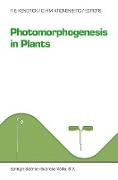Photomorphogenesis in Plants
BücherAngebote / Angebote:
It is perhaps not surprising that plants have evolved with a mechanism to sense the light environment around them and modify growth for optimal use of the available 'life-giving' light. Green plants and ultimately all forms of life depend on the energy of sunlight, fixed in the process of photosynthesis. By appreciating the quality, quantity, direction and duration of light, plants are able to optimize growth and control such complex processes as germination and flowering. To perceive the light environment a number of receptors have evolved, including the red/far-red light-absorbing phytochrome, the blue/UV-A light-absorbing cryptochrome and a UV-B light-absorbing pigment. The isolation and charac terization of phytochrome is a classic example of how use of photobiological techniques can predict the nature of an unknown photoreceptor. The current knowledge of phytochrome is found in Part 2 and that of cryptochrome and other blue/UV absorbing receptors in Part 3. Part 4 concerns the light environ ment and its perception. Part 5 consists of selected physiological responses: photomodulation of growth, phototropism, photobiology of stomatal move ments, photomovement, photocontrol of seed germination and photocontrol of flavonoid biosyntheses. Further topics in Part 6 are the photobiology of fungi, a genetic approach to photomorphogenesis and coaction between pigment systems. Our plan was to produce an advanced textbook which took a broad inter disciplinary approach to this field of photomorphogenesis.
Folgt in ca. 5 Arbeitstagen




